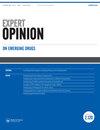Status of current trials and potential future trials with sparsentan.
IF 2.7
3区 医学
Q2 PHARMACOLOGY & PHARMACY
Expert Opinion on Emerging Drugs
Pub Date : 2023-12-01
Epub Date: 2023-07-23
DOI:10.1080/14728214.2023.2239151
引用次数: 0
Abstract
This editorial summarizes the scientific rationale for the use of sparsentan in proteinuric kidney disease. It reviews the ongoing randomized clinical trials of the drug in IgA nephropathy (IgAN) and focal segmental glomerulosclerosis (FSGS) as well as studies in pediatric patients and outlines the potential role of sparsentan in the future management of patients with proteinuric kidney disease. There is abundant evidence supporting the role of angiotensin II (AngII) and endothelin-1 (ET-1) signaling in the pathogenesis and perpetuation of glomerular injury. These vasoactive molecules act on mesangial and endothelial cells and podocytes, causing a variety of pathological changes in glomeruli, leading to proteinuria, and ultimately progressive glomerulosclerosis. Moreover, these signaling cascades interact with one another underscoring the potential application of sparsentan, a novel non-immunosuppressive dual endothelin and angiotensin receptor antagonist (DEARA) that blocks AT1 and Endothelin Type A (ETA) receptor activation The preclinical and clinical evidence supporting the use of dual AT1/ETA receptor inhibition over monoblockers of AngII or ET-1 actions in the treatment of kidney diseases has been reviewed by Komers and Plotkin [1]. Recent findings reinforce the value of specifically inhibiting ET-1 in patients with glomerular disease. Endothelin gene expression is elevated in patients with glomerular disease such as IgA nephropathy and an increased risk of disease progression [2]. Preclinical studies with sparsentan demonstrated a spectrum of antiproliferative, anti-inflammatory, antifibrotic, and podocyteprotective actions of the drug in different models of kidney disease including FSGS, IgAN, and Alport syndrome [3–6]. A novel protective mechanism of sparsentan in FSGS was recently suggested by Li et al. [7]. The abundance of tissueresident lymphocytes and the proportion of CD8 TRM cells are increased in kidneys from patients with FSGS. Sparsentan reduced TRM cell responses by inhibiting Ang II and/or ET1-mediated IL-15 signaling, thereby further regulating renal CD8 TRM cell accumulation in the kidney [5]. ETA receptor expression is increased in kidney biopsy specimens obtained from patients with FSGS, and the intensity is directly related to nephron loss and oxidative damage. The degree of oxidative stress is, in turn, associated with proteinuria [8,9]. 2. Sparsentan in IgA nephropathy (IgAN) and PROTECT目前的试验状况以及未来可能进行的稀疏生坦试验。
本文章由计算机程序翻译,如有差异,请以英文原文为准。
求助全文
约1分钟内获得全文
求助全文
来源期刊
CiteScore
5.90
自引率
0.00%
发文量
28
审稿时长
>12 weeks
期刊介绍:
Expert Opinion on Emerging Drugs (ISSN 1472-8214 [print], 1744-7623 [electronic]) is a MEDLINE-indexed, peer-reviewed, international journal publishing structured reviews on Phase II and Phase III drugs/drug classes emerging onto the market across all therapy areas, providing expert opinion on their potential impact on the current management of specific diseases.

 求助内容:
求助内容: 应助结果提醒方式:
应助结果提醒方式:


